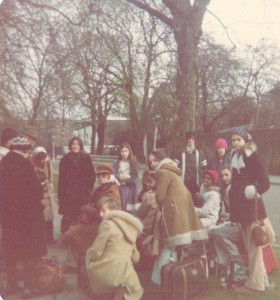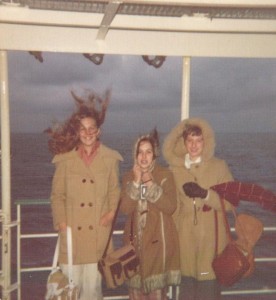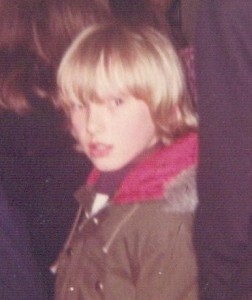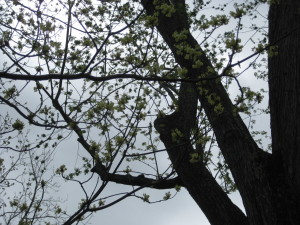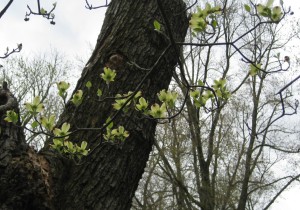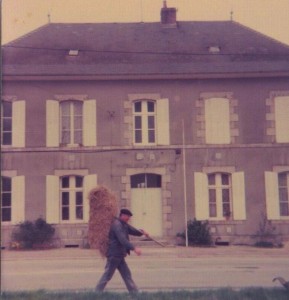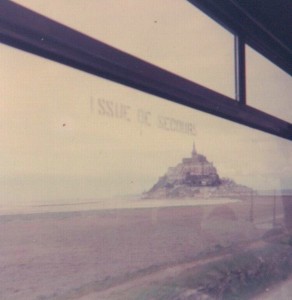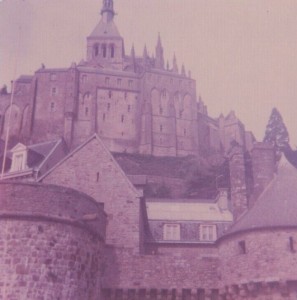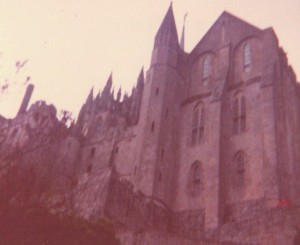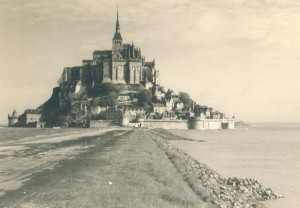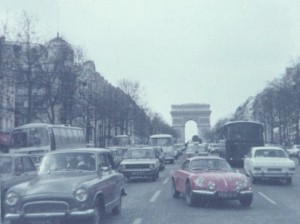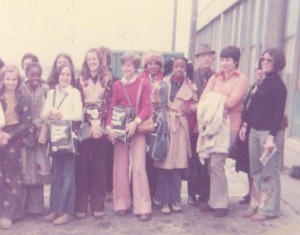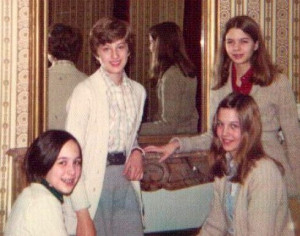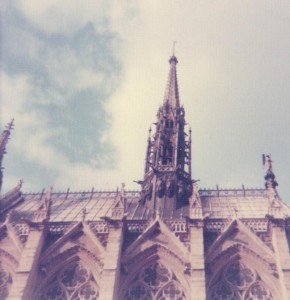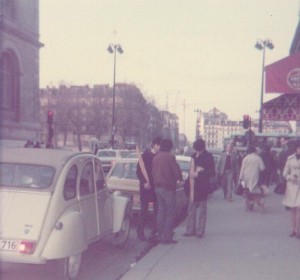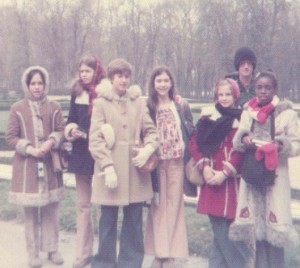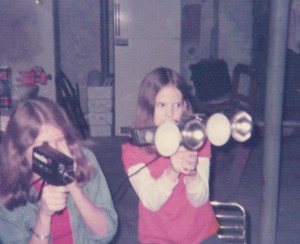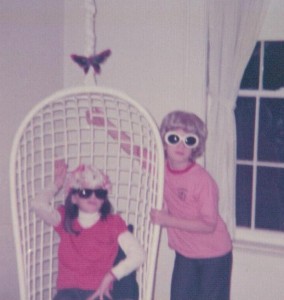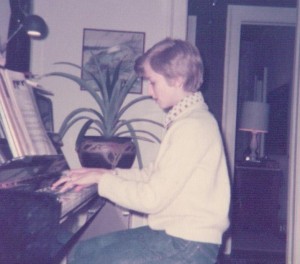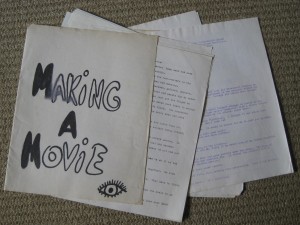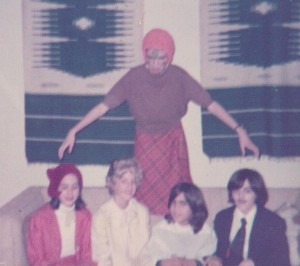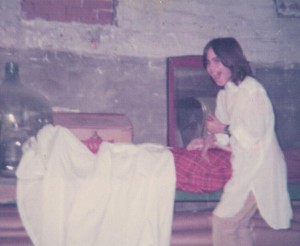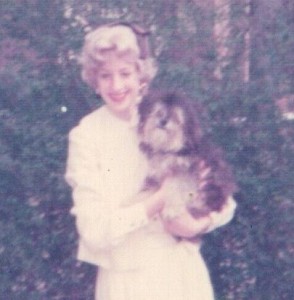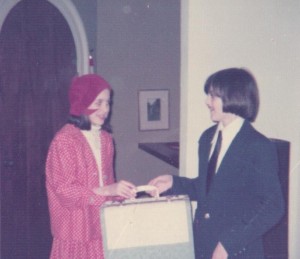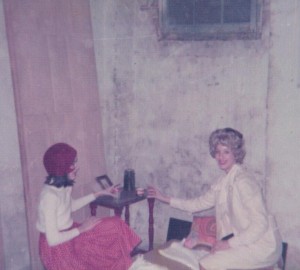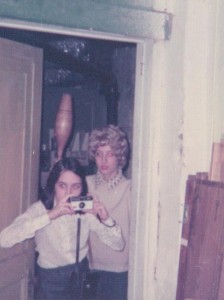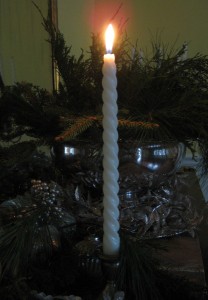We arrived at our London destination around midnight. For the next few nights we would be bunking in a dormitory of King’s College Hall. Instead of five or six of us in a communal chamber, as before in France, each of us had our own tiny cell. The barren, ascetic rooms offered limited distraction, and you’d think this would have been our chance to get some rest. But no. Katie, Jackie and I stayed up that first night until around 3 AM, indulging in giddy doses of adolescent humor.
The next morning we were in a fog of drowsiness on a bus rolling through London. Westminster Abbey, the Houses of Parliament, and Big Ben, still black with the coal dust of a century and a half, were blurry, dream-like images dancing improbably before my eyes. Once we began our walking tour, I was sufficiently awake to be irked at not having more time to spend in the Abbey, and at seeing the Tower of London only from the outside.
That afternoon we went shopping at Selfridge’s and Marks & Spencer. According to my journal entry, I wasn’t especially impressed; I described them simply as large department stores similar to Atlanta’s now long-defunct Rich’s. I’ve never been an enthusiastic shopper. Postcards and guidebooks were my primary European purchases, but in Marks & Spencer, Rebecca and I bought identical fuzzy white wool sweaters. London meals and evenings are among the vaguest of my memories. I’m certain, though, that we prolonged our nightly festivities at the dorm until well into the morning hours.
On our second day in England, we were back on the bus, heading to Stratford-on-Avon. During the drive, we were all elated when snow began to fall. Snow! In April! This offered further, indisputable proof that we were very far from home. Has a snowflake ever fallen in Atlanta in April? Possibly, but if so, it was terribly lonely, and it melted immediately. The English countryside was as beautiful as that of France. Scenes worthy of Christmas cards were plentiful: medieval-style barns, peacefully grazing horses and sheep, neat, increasingly white fields criss-crossed with ancient rock walls. We stopped briefly in Oxford, where we got off the bus for a glance at Christ Church College. The visit was long enough for me to fall in love with this town of unbelievably gorgeous student housing, and to determine to get back there one day, when I could linger, and wander.
In Stratford, we hit the usual tourist attractions, including Shakespeare’s birthplace and the cottage of his wife, Anne Hathaway. That evening, many of us at last managed some sleep. Unfortunately it was during a performance of Shakespeare’s Henry V. We were not at all prepared for the play; we had no idea of the plot, the actors’ Elizabethan English was indecipherably foreign, and we weren’t anywhere near the action.
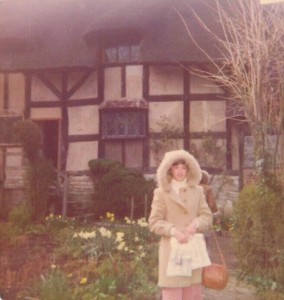
After our extended nap in Shakespeare’s theatre, we headed back to London. The last thing I remember about the trip was our group assembling the next morning on the sidewalk in front of King’s College, awaiting the bus that would take us to Gatwick Airport.
The long trip home has completely dropped from my memory, and in a way, I’m glad. In the years since, I’ve learned that going home requires far more time than getting wherever it is we’re going. It also demands vaster sums of patience and fortitude. But in my mind, I can skip right over all those tiresome hours of waiting and traveling. Suddenly, I’m my fourteen year old self, hugging my young parents in Atlanta’s as yet unremodeled Hartsfield Airport. Soon we’d be turning into our driveway, and I’d see that the azaleas were in full bloom. Daddy would be unlocking the door to the back hall, and my dog Popi would be waiting at the top of the stairs. I’d look into his eyes and know that he missed me. I’d drop my bag in my room and look around at the familiar surroundings of home. I would be completely happy. Happy to be home. And happy to know that one day, somehow or other, I’d get back to those far-away places that now seemed a little closer.
Most of us were not ready for this photo, taken outside King’s College, but we were ready to go home. Our remarkable teacher, Mrs. Correll, smiling at back left, is her usual cheerful self.
We miss her!

